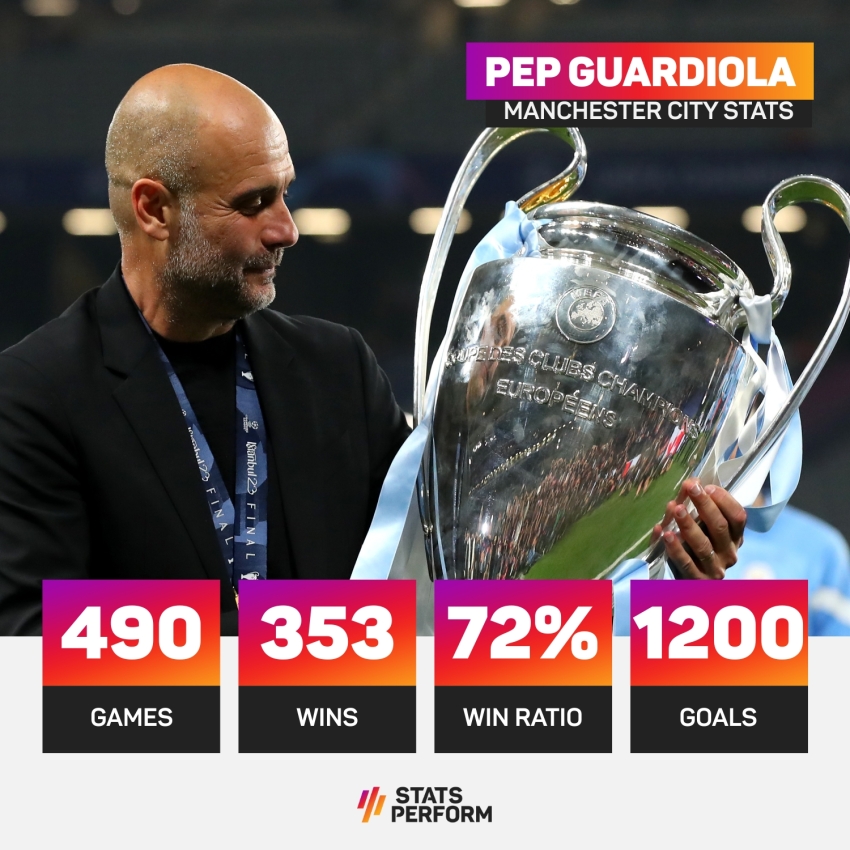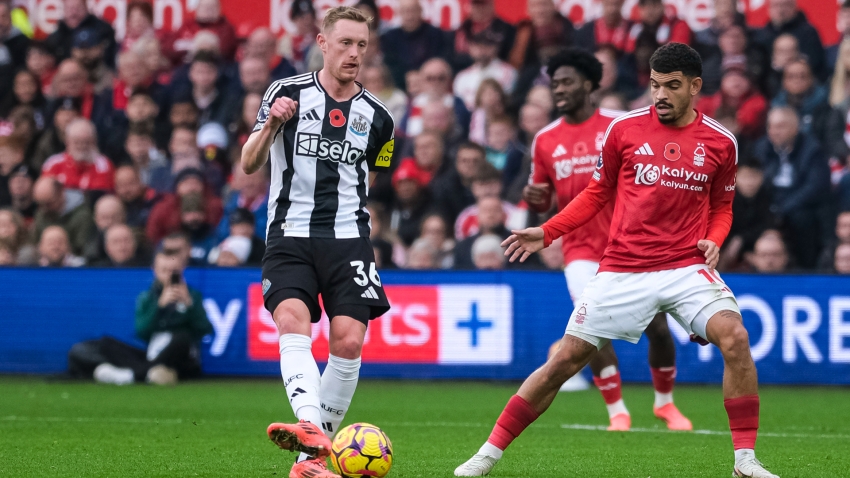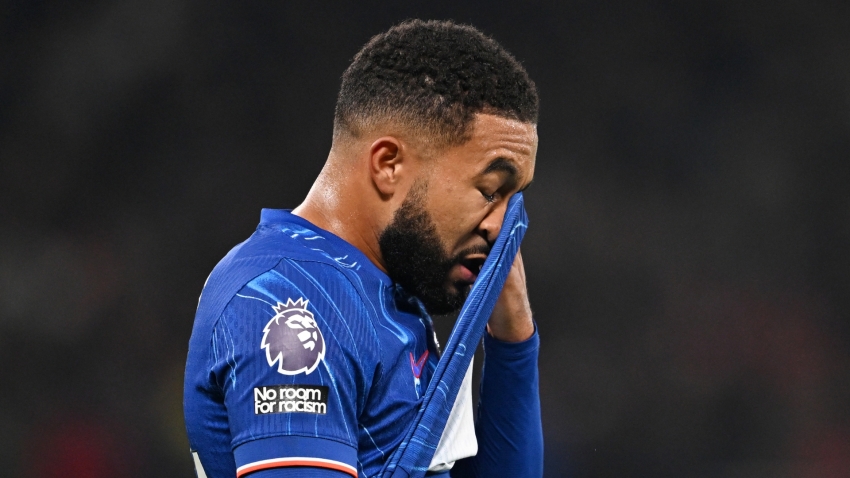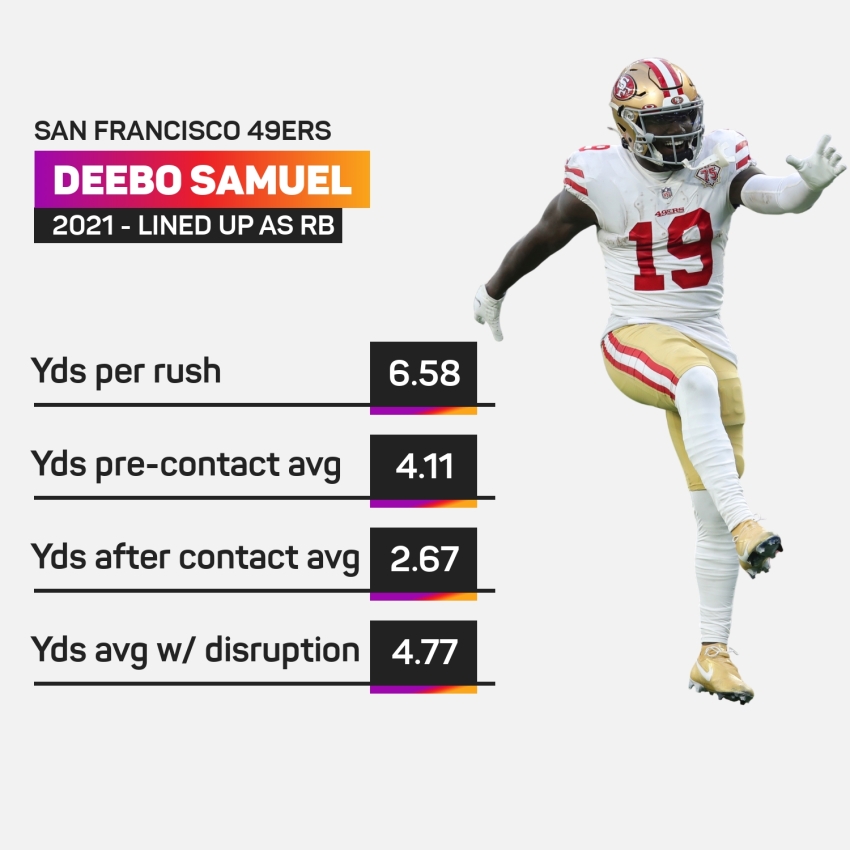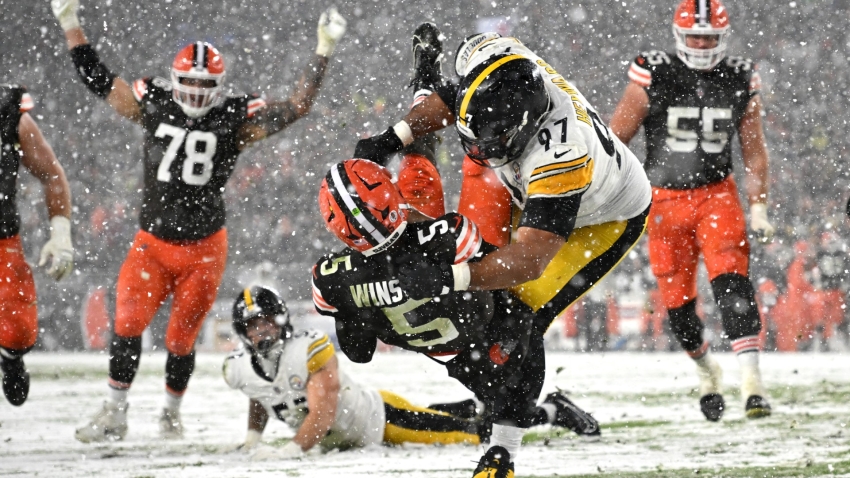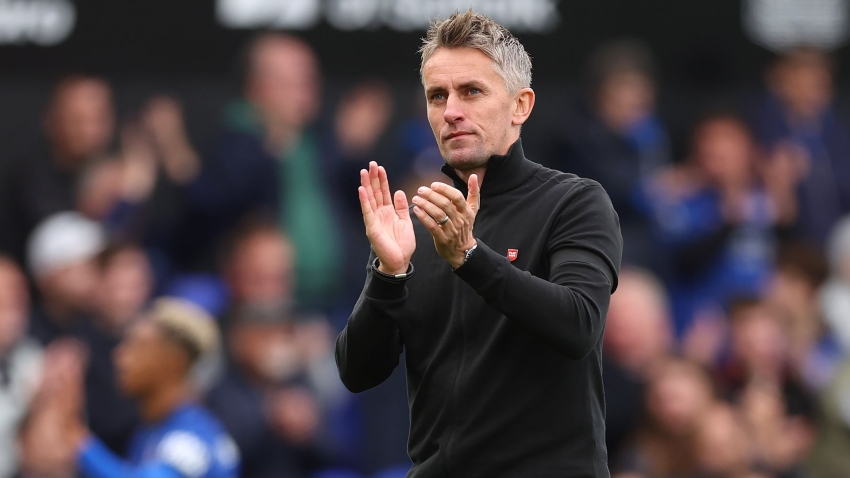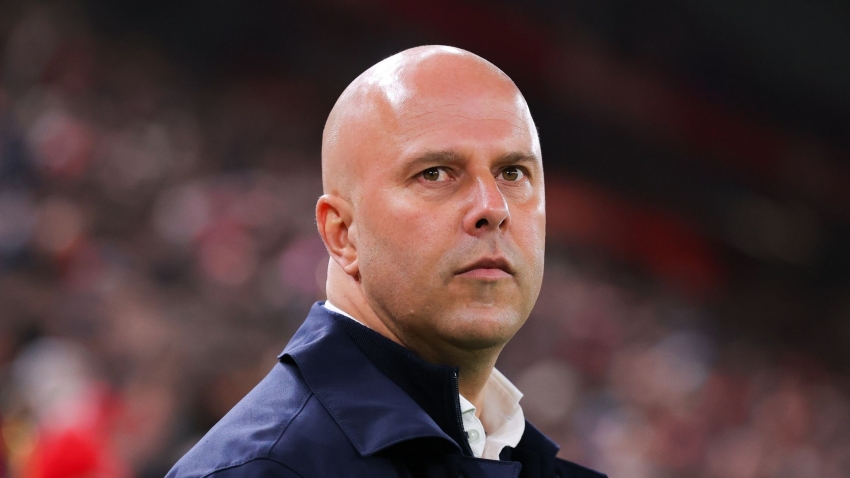For years, there has been talk of the NFL entering an era of 'positionless' football and, looking back on the 2021 season, there is a case to be made that it's finally here.
With the league dominated by dual-threat quarterbacks and defenses increasingly reliant on secondary defenders who can move around the field, the phrase 'the more you can do' has never more definitively applied to the NFL – at least not since the bygone era of the two-way player.
Indeed, players who can excel in several positions and fulfil a multitude of different roles are more valuable than ever, with three of the teams that made last season's final four dependent on players who are among the league's most versatile.
Using advanced data, Stats Perform can break down the league's multi-faceted stars and look at some of the more versatile players who have flown somewhat under the radar.
The NFC West Unicorns
Aaron Donald - Los Angeles Rams
We would be remiss to mention the most versatile players in the league and not start it with Donald.
Donald is the NFL's pre-eminent defensive player and the most remarkable aspect of his dominance is that he maintains it irrespective of where he lines up on the defensive line.
His pressure rate of 28.1 per cent last year led all interior defensive linemen and it only dipped to 27.7 per cent when he moved out to the edge, though he did so for just 94 pass-rush snaps in 2021 compared to 448 from his defensive tackle position.
And 108 of his 127 pressures on the inside involved him beating a pass protector. That was the case for 23 of his 26 edge pressures, which illustrates his ability to confound offensive linemen regardless of whether he's working within tight confines or from wide-open space.
Jalen Ramsey - Los Angeles Rams
Donald is the engine of the Los Angeles defense, but a unit that has leaned on its top-end talent would not have remained among the league's elite if not for the presence of arguably the NFL's top secondary defender.
Ramsey still played the vast majority of his snaps as an outside corner in 2021, playing 784 in that position. However, as the 'star' player on the Los Angeles defense, Ramsey spends most of his time locked on an opponent's top receiver, which frequently means playing in the slot.
Indeed, Ramsey played 366 snaps in the slot and was outstanding when lined up there. Targeted 31 times from the slot, Ramsey allowed a burn, which is when a receiver wins a matchup on a play in which they're targeted, 38.7 per cent of the time. The league average for slot corners with at least 50 coverage snaps was 50.7 per cent.
Ramsey posted the ninth-lowest burn yards per target average (5.84) and was the seventh-best slot by big play rate. He gave up a big play on just 6.5 per cent of targets.
His numbers as an outside corner were less impressive. Ramsey gave up a burn 48 per cent of the time and surrendered 10.32 burn yards per target. However, his big-play rate allowed of 19.4 per cent was still better than the average of 26.1 per cent (min. 50 snaps) and amounted to him giving up 15 big plays on 75 targets across 398 coverage snaps.
In other words, Ramsey allowed a big play on under four per cent of his coverage snaps as an outside corner. The 'lockdown defender' tag applies to Ramsey wherever he is on the field.
Deebo Samuel - San Francisco 49ers
The 49ers have dug in their heels and refused to indulge Samuel's trade request, with their determination to hold on to the wide receiver unsurprising given his outsized value to San Francisco's offense.
Samuel is to the 49ers' offense what Donald is to the Rams' defense. Last season, he was the reason it worked and the reason the Niners came agonisingly close to completing three wins over the Rams and claiming the NFC championship.
In a career year for Samuel, he racked up 1,405 receiving yards, leading the league with 18.2 yards per reception while his 10.1 yards after catch average was also the best among wideouts.
Yet it was the way in which the Niners utilised his ability in the open field to turn him into a de-facto running back in the second half of last season that weaponized the San Francisco offense.
When lined up in the backfield as a running back, Samuel averaged 6.58 yards per rush last season. He recorded 4.11 yards before contact per attempt, 2.67 yards after contact and averaged 4.77 yards per attempt on carries in which there was a run disruption by a defender.
No running back could match his yards per carry average or top his performance on rushes disrupted by a defender. Rashaad Penny of the Seattle Seahawks and Dontrell Hilliard of the Tennessee Titans were the only players with over 50 carries at running back to average over 4.0 yards before contact per rush. Kareem Hunt (2.84) of the Cleveland Browns was the only player to average more yards after contact per attempt than Samuel.
With the option to hand the ball off to Samuel or flare him out and get him the ball on screens, lining Deebo up in the backfield allowed the Niners to limit Donald's impact for long periods and lessen Ramsey's effectiveness when he played the 'star' role by forcing him to follow Samuel into the box.
The duplicity Samuel brings in his hybrid receiver-running back role is critical to head coach Kyle Shanahan winning the play-calling chess match. Despite his trade demands, it's why the Niners will ensure he remains on their board.
Cooper Kupp - Los Angeles Rams
While Kupp may not do the damage Samuel does out of the backfield, it is impossible to leave the reigning NFL Offensive Player of the Year off this list.
Kupp was the only receiver in the NFL last season to finish in the top five in burn yards per route as an outside receiver (fourth, 3.9) and from the slot (third, 4.0).
On top of that, he was fifth in big-play rate among outside receivers with at least 50 targets, registering an explosive on 39.7 per cent of targets. Only two wideouts, Christian Kirk (36.7) of the Arizona Cardinals and Cedrick Wilson (36.5) of the Dallas Cowboys produced a higher rate of big plays from the slot than Kupp's 36.4 per cent.
Lined up for 24 snaps as a running back, Kupp was also utilised as a safety net for Matthew Stafford out of the backfield on occasion. His proficiency in contributing to pass protection by blocking defenders before getting out into his route perfectly encapsulated just how well-rounded of a player he has become.
Queens on the Chessboard
Cordarrelle Patterson - Atlanta Falcons
Patterson was overdrafted by the Minnesota Vikings back in 2013, but he carved out a hybrid role last season in the Atlanta offense in which he, like Samuel, spent time in the backfield and lined up as a receiver.
Designated as a running back, Patterson averaged 4.07 yards per carry, racking up 2.0 yards after contact per attempt and 3.06 yards per attempt on rushes in which there was a disruption by a defender.
Among running backs who registered 100 carries and were targeted 50 times, Patterson's 22.6 per cent big-play rate on passing targets was the highest in the NFL. Alvin Kamara of the New Orleans Saints was second at 21.3.
With the Falcons transitioning to a new era at quarterback as Marcus Mariota and Desmond Ridder compete for the job, Patterson's ability to create yards after contact as a runner and explosive plays on routes out of the backfield will again be extremely valuable in 2022.
Between Patterson, Kyle Pitts and first-round pick Drake London, the Falcons have a trio of malleable playmakers who can ensure the offense is still explosive as they move away from the Matt Ryan era.
Travis Kelce - Kansas City Chiefs
In terms of value to his team, Kelce rivals Samuel with the multiple roles he plays for the Chiefs and the importance of him excelling from several spots will likely increase in 2022 following the Chiefs' trade of Tyreek Hill.
One of the league's most effective 'power slots' who uses his size and route running to his advantage when lined up as a de-facto slot receiver, Kelce played 333 snaps in that position in 2021.
He played 184 as an outside receiver and 136 from his traditional in-line tight end spot in an encapsulation of the evolution of a position that has grown ever more multi-faceted.
Kelce's burn rate from all three spots was over 70 per cent. He won his matchup with a defender on 79.1 per cent of targets as an in-line tight end. That ratio dipped to 76.3 per cent as an outside receiver and 74.4 per cent from the slot.
The majority of his big plays, however, came when he lined up outside. Kelce produced a big play on 34.8 per cent of his targets as an outside receiver and 32.3 per cent from the slot. He was not as explosive as an in-line tight end, a spot from where he delivered a big play 25.8 per cent of the time.
Though the numbers at each alignment may differ, they all paint the same picture: a playmaker who gets open regardless of where he is on the field. Combined with his underrated blocking, Kelce's remarkable versatility makes him one of the most dangerous offensive weapons in the NFL.
Elgton Jenkins - Green Bay Packers
Jenkins has played every position in the trenches apart from right guard during his three seasons in the NFL, and in that time he has established himself as one of the best young offensive linemen in the NFL and an integral part of the Packers' attack.
Last season, Jenkins played the entirety of his snaps at left tackle before injury curtailed his campaign after eight games. He allowed only 11 pressures on 163 pass protection snaps, with his pressure rate of 6.7 per cent superior to the average of 9.2 per cent among left tackles.
Prior to that in 2020, Jenkins played most of his snaps at left guard, but also filled in at center and made cameos at both tackle spots. His pressure rate of 4.7 per cent was fifth among left guards that year. At center, he gave up a pressure on just 2.1 per cent of snaps – the third-best rate among players at the position.
Essentially, Jenkins is a rare breed of offensive lineman who can hold up in pass protection at every position on the offensive front. He appears set to slot in at right tackle for 2022, but Jenkins will likely be the first person the Packers call upon if they have an injury at another spot up front.
Ambidextrous Defenders
Micah Parsons - Dallas Cowboys
Parsons claimed NFL Defensive Rookie of the Year in 2021 thanks to an exceptional first-year campaign that saw him make an unexpectedly outsized impact as a pass rusher.
On 220 pass-rush snaps, Parsons generated 69 pressures for a pressure rate of 31.4 per cent that was tops among linebackers with at least 50 pass rushes.
Parsons spent 153 of those snaps on the edge but also proved extremely effective in coverage. Allowing a burn on 41.9 per cent of targets last season, Parsons gave up only 6.86 yards per target – the fourth-fewest among linebackers targeted at least 25 times.
Also second for his position with a run disruption rate of 16.4 per cent, Parsons swiftly proved his ability to influence every facet of the game and his multiplicity will make him somebody opposing play-callers will constantly have to think about when game planning for the Cowboys.
Jeremiah Owusu-Koramoah - Cleveland Browns
Though Parsons was the standout defensive rookie in the league last season, he was not the best first-year linebacker in coverage. That distinction went to Owusu-Koramoah, who slid to the second round of the 2021 draft and went on to lead all linebackers with 5.83 burn yards per target allowed and give up a big-play rate of 4.5 per cent that was also the best for the position.
Owusu-Koramoah played most of his snaps (414) at inside linebacker but also spent time at outside linebacker, on the edge and in the slot on top of a handful of snaps at outside corner.
He did not pass rush often, logging just 27 snaps in that regard, but gained nine pressures for a pressure rate of 33.0 per cent. Against the run, he registered a disruption rate of 15.3 per cent.
Owusu-Koramoah is a player the Browns can trust to hold up in man and zone coverage and has the flexibility to operate in almost every position in the back seven. He can play the run extremely well and has produced encouraging flashes as a pass rusher to suggest he can grow in that area.
Any success the Browns enjoy on defense in 2022 will likely in part be a product of Owusu-Koramoah's malleability.
Chuck Clark - Baltimore Ravens
The Ravens added Kyle Hamilton and Marcus Williams to their safety room this offseason but have, to this point, kept hold of Clark.
On the surface, that may be something of a surprise. However, a deeper dive into the numbers illustrates the value he has to Baltimore's defense.
Though Clark operated at free safety for 526 snaps in 2021, he also played 108 at strong safety, 97 in the slot, 81 on the edge and over 100 at linebacker.
He defended double-digit targets from free safety, strong safety and in the slot. Only at free safety did he allow more 10 burn yards per target.
His average of 8.01 burn yards allowed per target when lined up as a deep safety was 12th in the NFL. In the slot, he gave up 9.25 per target – better than the average of 9.53 for slots with at least 50 snaps.
With Williams set to slide in at free safety, Hamilton and Clark will have the freedom to roam around the field in three-safety looks and their proficiency in playing the slot should offer the Ravens more answers in defending tight ends and the bigger wideouts that are spending an increasing amount of time on the inside.
Under the Radar Rovers
Kamren Curl - Washington Commanders
Sticking at the safety position and with teams that play their football in Maryland, Curl has quietly emerged as a stud who can fulfil a variety of roles in the defensive backfield.
Last season, Curl played 342 snaps as a free safety, 211 in the slot, 90 as a strong safety, 56 as an inside linebacker, 53 as an outside linebacker and 45 as an outside corner. To say the Commanders have confidence in him all over the field is putting it mildly.
Lined up as a deep safety, Curl allowed 6.02 burn yards per target – the best ratio in the NFL. He allowed a big play on 14.8 per cent of targets, which was the fourth-best rate among deep safeties.
In the slot, he surrendered only 6.15 burn yards per target and a big play on two of his 21 targets. Though Curl was not asked to do as much in coverage when he played closer to the line of scrimmage, he influenced the game with his play against the run. His run disruption rate of 10.0 per cent from the inside linebacker spot was equal to that of Derwin James of the Los Angeles Chargers.
Defensive centrepieces are rarely found in the seventh round, but the Commanders have clearly unearthed one who has the multiplicity to rival defenders of a much higher profile.
Elijah Moore - New York Jets
If former 49ers defensive coordinator and now Jets head coach Robert Saleh is hoping to develop his version of Deebo Samuel, then Moore may be his best candidate.
Moore thrived playing as both an outside receiver and in the slot in his rookie season after being picked in the second round last year. He was tied for 16th in burn yards per route (3.0) among receivers with at least 50 targets. Moore also finished 16th in that group in big-play rate, delivering a burn or a burn for a touchdown on 35.7 per cent of targets.
Though the explosive plays (25.7 per cent) dropped off when he was in the slot, Moore excelled at maximizing his separation as an inside receiver, finishing tied for 10th (min. 25 slot targets) with 3.1 burn yards per route.
Moore carried the ball only five times as a rookie, but he averaged over 10 yards per attempt, with one of those attempts going for a touchdown. Though it is an extremely small sample size, that's the kind of efficiency to suggest he should be given increased opportunities on designed touches out of the backfield in his second season.
Asking Moore to replicate Samuel would be ambitious. However, if he can succeed in a more varied role while continuing to produce from several receiver spots, it would be a substantial boost to Zach Wilson's hopes of a second-year leap.









